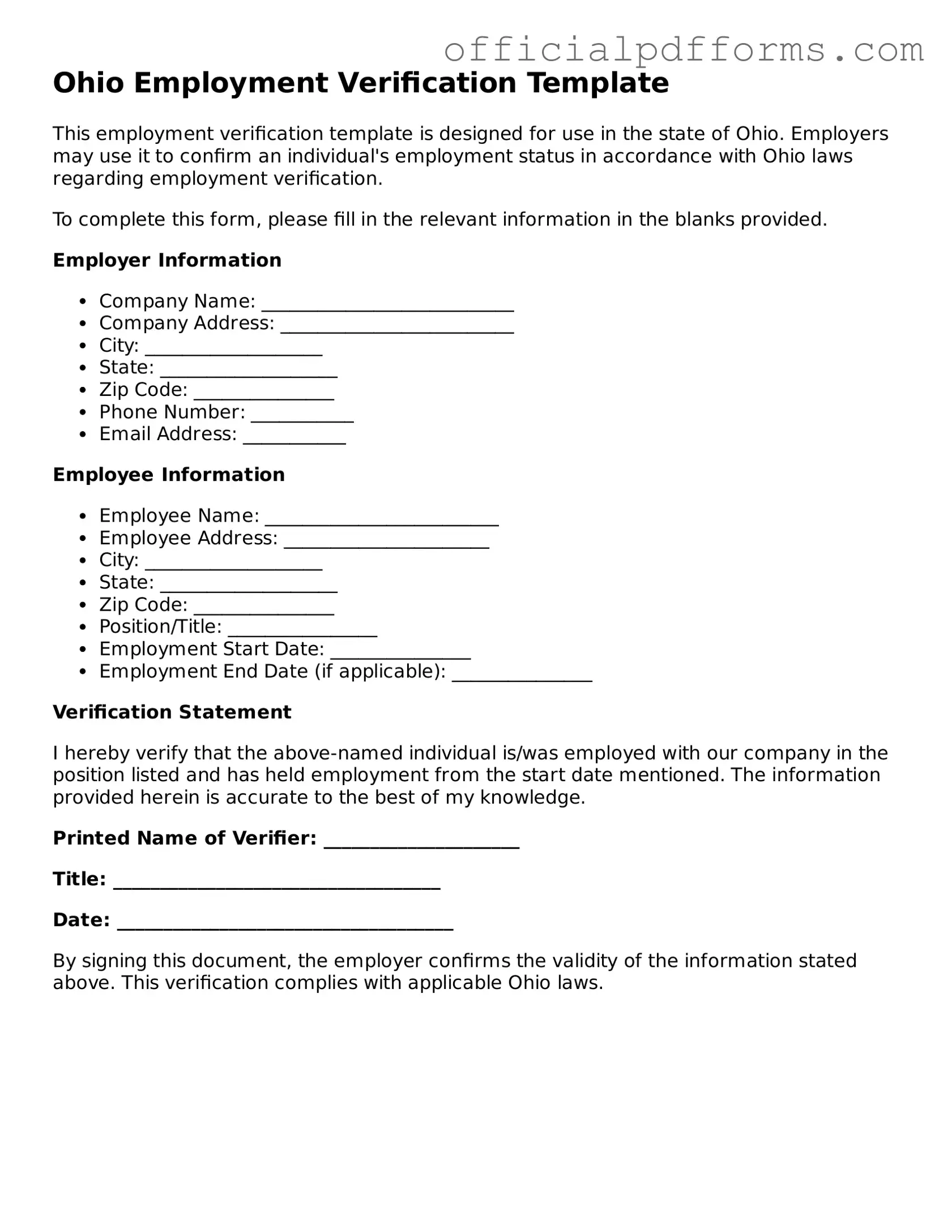The Ohio Employment Verification form is a document used to confirm an individual's employment status. Employers or authorized representatives complete this form to provide verification to third parties, such as lenders or government agencies, regarding a person's job position, salary, and employment duration.
Typically, employers are responsible for completing the form. Employees may request this verification for various reasons, including applying for loans, renting property, or seeking government assistance. It is essential for employers to respond promptly to these requests to assist their employees.
The form generally includes the following details:
-
Employee's name
-
Employee's job title
-
Employment start date
-
Current employment status (active or terminated)
-
Salary or hourly wage
-
Employer's contact information
How does an employee request an employment verification?
An employee can request an employment verification by contacting their employer's human resources department. A formal written request may be necessary, specifying the purpose of the verification and any deadlines for submission. Clear communication helps ensure timely processing.
Generally, there should be no fee for completing the Ohio Employment Verification form. Employers typically provide this service as part of their responsibilities. However, some employers may have specific policies regarding administrative fees, so it is advisable to confirm with the HR department.
The time frame for receiving a completed Ohio Employment Verification form can vary. Typically, employers aim to process requests within a few business days. However, delays may occur during busy periods or if additional information is needed. Employees should allow sufficient time for processing.
Employers may refuse to complete the form under certain circumstances. For example, if the employee has not authorized the verification or if the request lacks sufficient information, the employer may decline. Employers should communicate any reasons for refusal clearly to the employee.
What should an employee do if their employment verification is incorrect?
If an employee notices inaccuracies in their employment verification, they should promptly contact their employer's HR department. Providing any necessary documentation or evidence will help rectify the situation. Employers have a responsibility to correct errors in a timely manner.
While there are no specific state laws mandating the use of the Ohio Employment Verification form, employers must comply with federal regulations regarding employment verification. This includes providing accurate information and maintaining confidentiality. Employers should be aware of relevant laws to avoid potential legal issues.
Can employment verification be done electronically?
Yes, many employers now offer electronic methods for completing employment verification. This can streamline the process and make it more efficient. Employees should inquire whether their employer supports electronic verification and what the specific procedures are.
